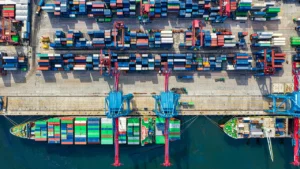Table of Contents
Digital twins are virtual replicas of physical objects, systems, or processes that are used to simulate, predict, and optimize performance. By integrating real-time data and advanced analytics, digital twins provide valuable insights that can enhance decision-making and improve efficiency across various industries.
Why: The importance of digital twins
Digital twins are important because they enable better decision-making and efficiency. By creating a digital counterpart of a physical entity, organizations can monitor performance, predict failures, and optimize operations without the need for physical testing. This leads to reduced downtime, lower maintenance costs, and improved product quality. Additionally, digital twins support innovation by allowing for rapid prototyping and testing of new ideas in a virtual environment, which accelerates development cycles and reduces risks.
How: Implementing digital twins
Implementing digital twins involves collecting and integrating data from various sources to create an accurate virtual model. This process typically includes the use of sensors to gather real-time data from the physical object, which is then processed and analyzed using advanced algorithms and machine learning techniques. The digital twin continuously updates to reflect changes in the physical object, enabling real-time monitoring and analysis. For example, in manufacturing, digital twins can simulate production processes to identify bottlenecks and optimize workflows. In healthcare, digital twins of patients can be used to personalize treatment plans and predict health outcomes.
What: Applications and benefits of digital twins
Digital twins have a wide range of applications across different industries. In manufacturing, they are used to optimize production lines, predict equipment failures, and improve product design. In healthcare, digital twins of organs or entire bodies can help in planning surgeries, developing personalized treatments, and monitoring patient health. In urban planning, digital twins of cities can simulate traffic flows, energy consumption, and environmental impacts to support sustainable development. The benefits of digital twins include enhanced operational efficiency, reduced costs, improved product quality, and accelerated innovation.
Wrap-up
In summary, digital twins are a powerful tool that enhances decision-making and operational efficiency by providing a virtual representation of physical entities. By understanding the “why,” “how,” and “what” of digital twins, we can appreciate their significance and potential. As technology continues to advance, the applications and benefits of digital twins will expand, driving innovation and improving outcomes across various sectors.



